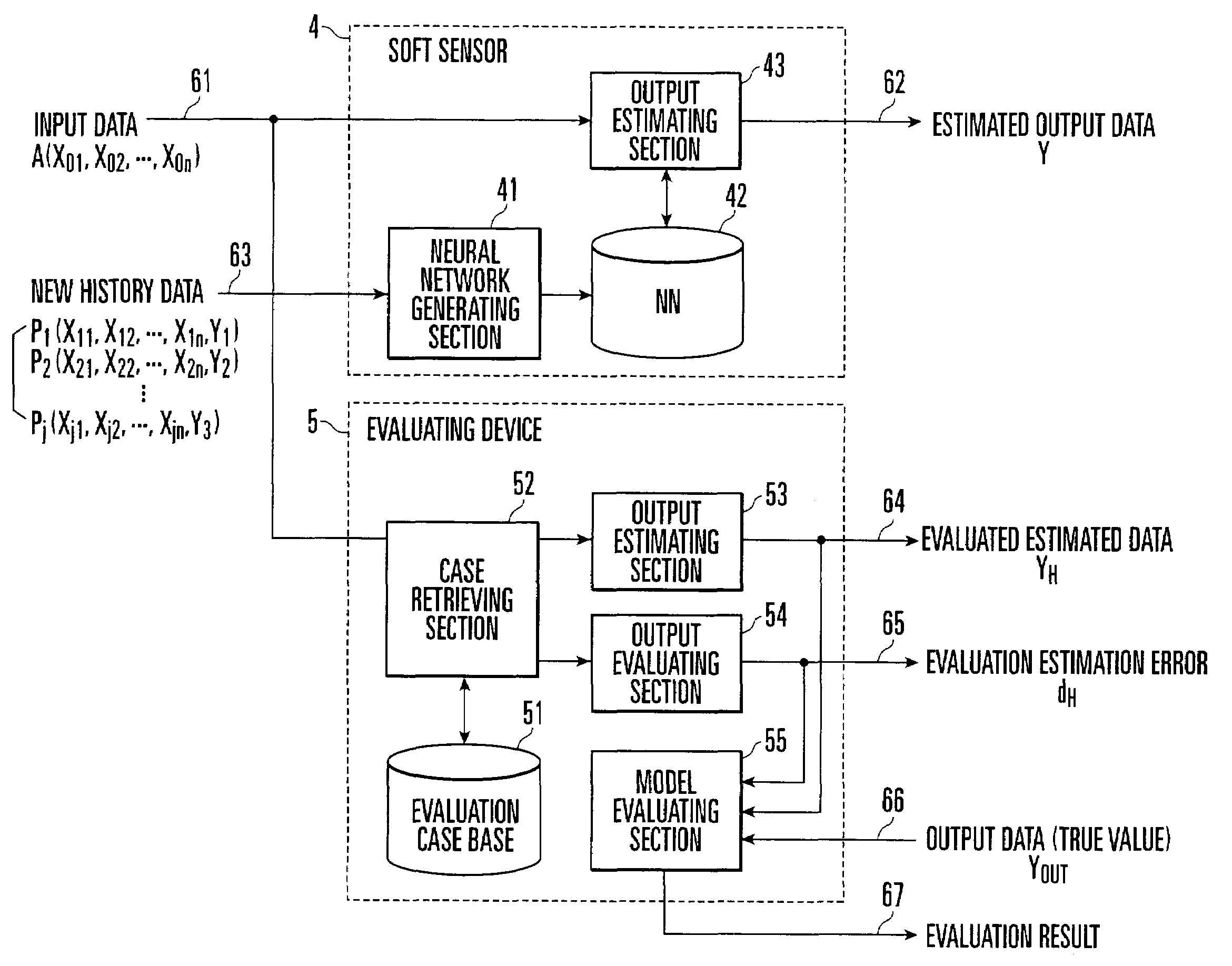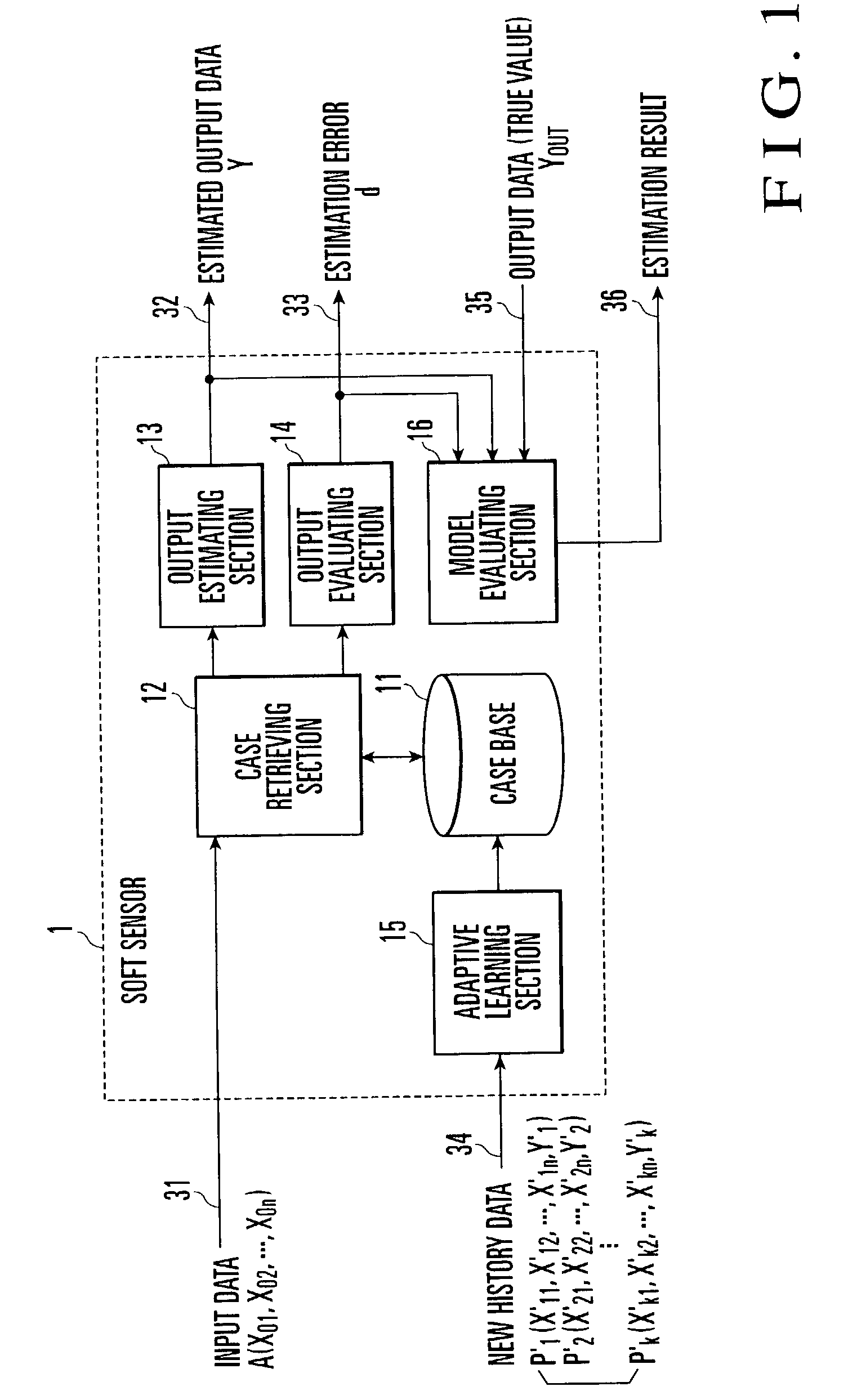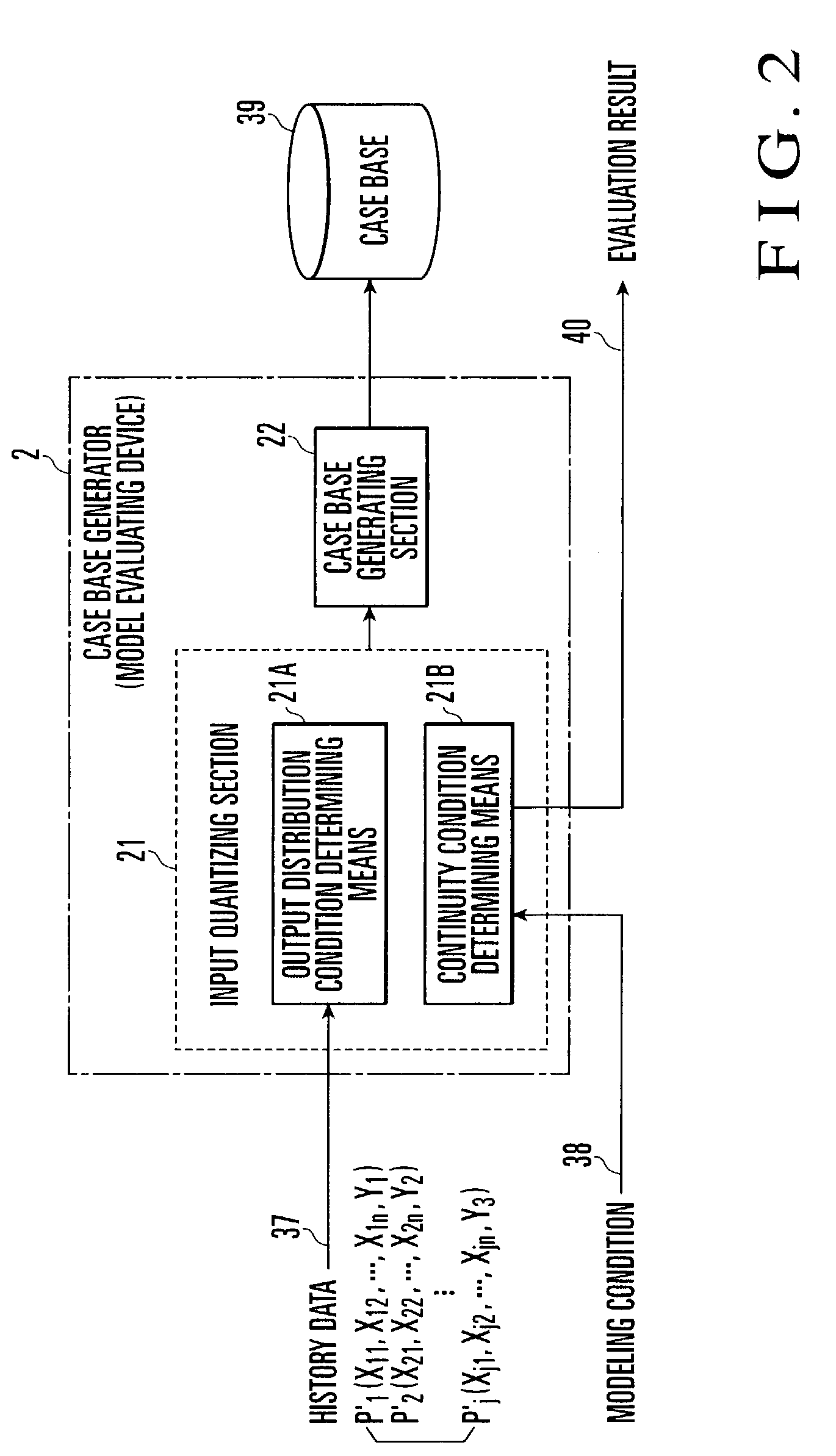Soft sensor device and device for evaluating the same
a soft sensor and sensor technology, applied in the field of case-based reasoning, can solve the problems of difficult to meet the expectation that the soft sensor be used instead of the hard sensor, the learning period is required for a relative long time, and the inability to follow up changes in targets in real tim
- Summary
- Abstract
- Description
- Claims
- Application Information
AI Technical Summary
Benefits of technology
Problems solved by technology
Method used
Image
Examples
first embodiment
[0036]FIG. 1 is a functional block diagram showing a soft sensor according to the first embodiment of the present invention. A soft sensor 1 includes a case base 11, case base retrieving section 12, output estimating section 13, output evaluating section 14, adaptive learning section 15, and function evaluating section 16. The case base 11 is generated by a case base generator 2 (to be described later) on the basis of the history data actually obtained from the behavior of a target whose output data is estimated by the soft sensor 1. This case base 11 is a case base generated by importing the concept of topology, in which an input space is quantized in accordance with a desired output allowable error (required precision), and an input / output relationship is defined for each unit input space (to be referred to as a mesh hereinafter).
[0037]The case retrieving section 12 selects a mesh corresponding to new input data A (31) by referring to this case base 11, and retrieves a case repres...
second embodiment
[0081]The evaluation of an output from a soft sensor according to the second embodiment of the present invention will be described with reference to FIG. 1. In this embodiment, in the operation of the soft sensor, an estimation error d with respect to estimated output data Y is calculated by an output evaluating section 14 of a soft sensor 1, and output in real time concurrently with the estimated output data Y.
Evaluation of Output: Output Evaluating Section
[0082]As shown in FIG. 13, the reliability of the estimated output data Y is defined by a similarity. The output evaluating section 14 calculates estimation error d=(r+1)ε from a similarity r representing the distance between a mesh corresponding to input data A and a retrieved mesh and an output error allowable width ε per mesh set as a modeling condition on the basis of the retrieval result obtained by a case retrieving section 12. If, therefore, a case exists in the mesh corresponding to the input data A, since the topological...
third embodiment
[0084]The evaluation of the function of a soft sensor according to the third embodiment of the present invention will be described next with reference to FIG. 1. In this embodiment, in the operation of a soft sensor 1, a function evaluating section 16 evaluates whether the soft sensor 1 is properly functioning, i.e., functioning according to the specifications of the soft sensor which are determined by a desired output error allowable width and topological distance.
Evaluation of Function of Soft Sensor: Function Evaluating Section
[0085]A method of evaluating the function of a soft sensor will be described below with reference to FIGS. 19 and 20. FIG. 19 is a view for explaining conditions used for the evaluation of the function of the soft sensor. FIG. 20 is a view for explaining the relationship between the conditions and the evaluation results. The function of the soft sensor is evaluated on the basis of two conditions ① and ② shown in FIG. 19.
[0086]With regard to condition ①, the...
PUM
 Login to View More
Login to View More Abstract
Description
Claims
Application Information
 Login to View More
Login to View More - R&D
- Intellectual Property
- Life Sciences
- Materials
- Tech Scout
- Unparalleled Data Quality
- Higher Quality Content
- 60% Fewer Hallucinations
Browse by: Latest US Patents, China's latest patents, Technical Efficacy Thesaurus, Application Domain, Technology Topic, Popular Technical Reports.
© 2025 PatSnap. All rights reserved.Legal|Privacy policy|Modern Slavery Act Transparency Statement|Sitemap|About US| Contact US: help@patsnap.com



